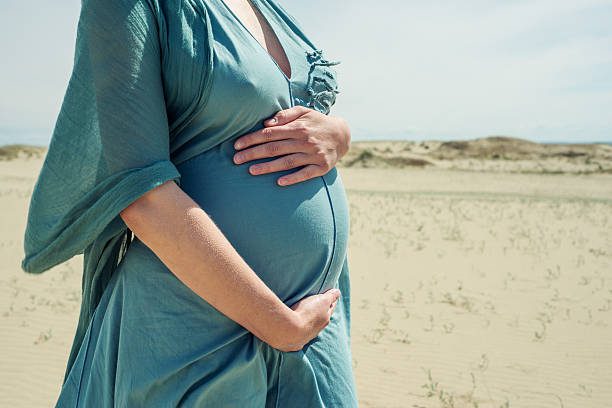Conceiving a New Interpretation of Equality Law for Those Undergoing Fertility Treatments
By Michelle Weldon-Johns
An increasing number of people in the UK undergo assisted reproductive technology (ART) treatments annually to conceive or to preserve fertility. HFEA data show that in the UK in 2019, nearly 53,000 persons received 68,975 cycles of IVF, 5,694 cycles of donor insemination treatment, 2,396 egg freeze cycles and 8,174 embryos were stored. This has significant implications for working persons, with the requirements to attend often time-sensitive appointments and undergo, at times, invasive fertility treatments that have an impact on availability for work, not to mention physical and mental effects. Nevertheless, those engaged in ART treatment find themselves outside the traditional boundaries of equality law protection. This is concerning given the potential for treatment to interfere with work and/or workplace performance, and their resulting vulnerability to discrimination and/or dismissal.
The UK Equality Act 2010 extends protection only to those who satisfy one of nine specific protected characteristics, with sex, pregnancy and maternity, and disability most relevant here. However, none of these characteristics alone offers sufficient protection for all those engaged in ART treatments. Nevertheless, equality law offers some possibilities for the future if developed appropriately.
Existing interpretations
The biggest challenge with existing protections is when these protections begin. This is most notable in relation to pregnancy and maternity; for which protections only commence with pregnancy. Although Case C-506/06 Mayr v Bäckerei und Konditorei Gerhard Flöckner OHG ECLI:EU:C:2008:119 presented the possibility of widening the concept of when pregnancy protection starts, the Court of Justice of the European Union ultimately failed to extend pregnancy discrimination protections to those undergoing fertility treatment, instead utilizing sex discrimination protection, but only from the point when transfer of the fertilized ova is imminent, and not more broadly when fertilization occurs. The rationale is that pregnancy cannot exist separately from the female body, so pregnancy protection cannot apply until implantation. On the surface, this is understandable, given that in Austria, where the Mayr case originated, fertilized ova can only be stored for a maximum of 10 years. Indeed, in the UK, while embryos can now be stored for a maximum of 55 years, the consent of all relevant parties must be renewed every 10 years. Considering someone to be pregnant throughout is untenable. However, broader boundaries could have been drawn to encompass those actively undergoing a course of treatment, providing them with protection throughout, thus recognizing that less favorable treatment is not limited to the final stages. However, in Sahota v The Home Office [2010] 2 CMLR 29, the Employment Appeal Tribunal confirmed that the decision in Mayr applies only to the later stages of treatment. Nevertheless, the Mayr decision provides a greater degree of certainty to those in these stages of sex-specific treatment.
While the protected characteristic of sex offers greater opportunities for protection, it is limited in practice, because it is inherently comparative and requires a female undergoing ART treatment to be compared with a male undergoing a male-specific form of treatment. Consequently, absences for ART treatment can still be dealt with in the same way as other forms of illness absence without being discriminatory (London Borough of Greenwich v Robinson (unreported; [1995] UKEAT 745)). Thus, there is no recognition of the greater impact that fertility treatment has on women and no specific protections, despite the reality that women undergo the most invasive treatments and those most likely to impact on work. Consequently, those undergoing treatment are vulnerable to absence management procedures and ultimately dismissal because of fertility-related absence.
The final possibility is the protected characteristic of disability, used to argue that infertility is a form of disability. This argument has never been tested by the UK or EU courts, instead only arising when there is an underlying disability that prevents carrying a pregnancy (Murphy v Slough Borough Council [2005] ICR 721; Case C-167/12 CD v ST [2014] ECLI:EU:C:2014:169; Case C-363/12 Z v A (Re Equal Treatment) ECLI:EU:C:2014:159). However, this approach is limited because it fails to recognize that the person undergoing treatment may not themselves be infertile, and/or is undergoing treatment for another reason, e.g. because they are a same-sex couple, single or a surrogate. While some have embraced the discourse of disability in this context, there has also been resistance to extending the definition of disability to infertility. Thus, adopting this approach alone could further widen the gaps in protection for certain groups.
Conceiving a new interpretation of equality
Despite these challenges, there is still the possibility that equality law could be reconceived to include those engaged in ART treatment by enacting s.14 of the Equality Act 2010, which would permit claims of combined discrimination. While this would not directly include those undergoing ART treatment, it would allow for claims to be brought on dual intersecting grounds, such as disability and sex. Thus, the legislation would acknowledge the gendered implications of infertility and enable a reinterpretation of the definition of disability through a gendered lens. For instance, infertility could be considered a physical impairment. The Guidance states that day-to-day activities include things done on a regular or daily basis and also recognizes that they need not be undertaken by the majority of people, and some may only be undertaken by members of one sex. Thus, it acknowledges that some activities are sex-specific, and that a gendered analysis may be necessary in determining if they are day-to-day activities. Adopting such an analysis could recognize reproduction as a day-to-day activity. While this has yet to be tested in the UK, the Equality Act Guidance does refer to breastfeeding as being a normal day-to-day activity. Thus, recognizing some activities may occur infrequently but can still be considered normal day-to-day activities. Being infertile has a substantial impact on carrying out the normal day-to-day activity of reproduction, thus satisfying the definition of disability providing that it is also long-term (lasts for at least 12-months (or is expected to), or for life).
Alternatively, from a sex discrimination perspective, combined discrimination could facilitate the adoption of an asymmetrical approach, recognizing that differential treatment is required to ensure equality for women in this context. For instance, this could recognize the impact of childbearing on workplace engagement and draw analogies with the approach adopted for pregnancy discrimination, which conceptually recognizes the intersections between sex and disability, including the need to accommodate difference. A similar approach would be appropriate in this context, given the sex-specific nature of ART treatments and the inherent connection with childbearing capacity.
Conclusion
While UK equality law does not yet clearly include those engaged in ART treatments, the potential is there for it to be amended to facilitate new interpretations. Such changes, alongside the enactment of a right to time off for fertility treatment, are necessary to ensure that UK employment and equality law keeps pace with the scientific advances and lived experiences of the increasing number of working persons undergoing such treatments.
Michelle Weldon-Johns is a senior lecturer in law and Programme Leader for the LLB(Scots) Law programme at Abertay University.






